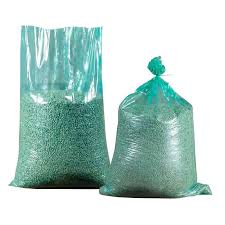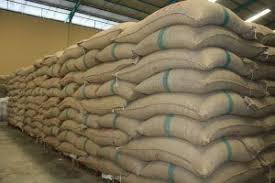Effective agricultural storage methods are crucial in agriculture to preserve the quality of produce, reduce losses, and ensure food security.
Agricultural storage refers to the practices and techniques used to preserve and protect agricultural products from deterioration and spoilage. Proper storage extends the shelf life of crops, reduces post-harvest losses, and maintains the nutritional value of food.
Different storage methods cater to various types of produce, depending on their specific requirements.
Importance of Proper Storage in Agriculture
Proper storage is essential in agriculture for several reasons:
1. Reducing Post-Harvest Losses: Effective storage prevents spoilage and waste, ensuring that farmers maximize their yields.
2. Maintaining Quality: Proper storage methods preserve the taste, texture, and nutritional value of agricultural products.
3. Enhancing Marketability: High-quality products are more appealing to consumers, increasing market demand and profitability for farmers.
4. Ensuring Food Security: By minimizing losses and maintaining quality, proper storage contributes to a stable food supply, helping to address food insecurity.
5. Facilitating Trade: Well-stored products can be transported over longer distances without losing quality, enhancing market opportunities for farmers.
Traditional Storage Techniques

Traditional storage methods have been used for centuries and often rely on local materials and knowledge. Some common traditional storage techniques include:
1. Granaries: Elevated structures made of wood or mud, used for storing grains and legumes, protecting them from pests and moisture.
2. Pot Storage: Clay pots are used to store grains and seeds, providing a natural barrier against pests.
3. Hanging Storage: Produce is hung from rafters or beams to prevent spoilage and pest access.
4. Burial Storage: Some crops are buried in the ground, covered with straw or leaves, to maintain a cool environment.
Modern Storage Techniques
Modern storage techniques employ advanced technology to enhance storage conditions. These methods include:
1. Controlled Atmosphere Storage: This technique regulates oxygen, carbon dioxide, and humidity levels to slow down the ripening process and prolong shelf life.
2. Refrigerated Storage: Modern cold storage facilities use refrigeration to keep perishable goods at optimal temperatures, reducing spoilage.
3. Vacuum Packing: This method removes air from packaging to prevent oxidation and spoilage, extending the shelf life of products.
4. Modified Atmosphere Packaging (MAP): This involves altering the composition of the air inside packaging to prolong freshness and prevent spoilage.
Dry Storage for Grains
Dry storage is essential for grains to prevent moisture absorption, which can lead to spoilage and mold growth. Key aspects include:
1. Ideal Conditions: Grains should be stored in a cool, dry environment with low humidity levels (below 14%).
2. Use of Silos: Large silos can store bulk grains, providing aeration and moisture control.
3. Regular Inspection: Periodic checks for pests and moisture levels are necessary to maintain grain quality.
Dry Storage for Cereals
Cereals, similar to grains, require proper storage to retain their quality. Considerations for cereal storage include:
1. Packaging: Cereals should be stored in airtight containers to protect against moisture and pests.
2. Temperature Control: Keeping cereals in a cool place helps maintain their freshness and flavor.
3. Storage Duration: Regular rotation of cereal stocks ensures that older products are used first, preventing spoilage.
Cold Storage for Vegetables
Cold storage plays a critical role in maintaining the freshness of vegetables. Important points include:
1. Optimal Temperature: Most vegetables should be stored at temperatures between 0°C to 5°C (32°F to 41°F) to slow down decay.
2. Humidity Control: Maintaining high humidity (80-95%) helps prevent wilting and moisture loss in vegetables.
3. Shelving and Bins: Using shelves and bins allows for good air circulation, reducing the risk of spoilage.
Controlled Atmosphere Storage
Controlled atmosphere storage is a method that modifies the composition of gases surrounding the stored product. This technique is commonly used for fruits and vegetables to slow down ripening and maintain freshness.
1. Gas Composition: In this storage method, oxygen levels are reduced while carbon dioxide levels are increased, slowing respiration and ripening processes.
2. Temperature and Humidity Control: Maintaining specific temperature and humidity levels further enhances the preservation of produce.
3. Duration of Storage: Controlled atmosphere storage can extend the shelf life of perishable products for several months, making it ideal for long-term storage.
Refrigerated Storage Systems
Refrigerated storage systems use refrigeration technology to keep agricultural products at low temperatures, reducing spoilage and maintaining quality.
1. Temperature Control: Most perishable goods, such as dairy products, meat, and vegetables, should be stored between 0°C to 5°C (32°F to 41°F).
2. Continuous Monitoring: Modern refrigerated systems often come equipped with sensors to monitor temperature and humidity, ensuring optimal storage conditions.
3. Energy Efficiency: Innovations in refrigeration technology have led to more energy-efficient systems, reducing costs and environmental impact.
Cryogenic Storage in Agriculture
Cryogenic storage involves freezing agricultural products at extremely low temperatures, often using liquid nitrogen.
1. Preservation of Nutritional Value: Cryogenic storage helps retain the nutritional value and quality of food products by slowing down enzymatic reactions.
2. Long-Term Storage: This method is particularly useful for long-term storage of fruits, vegetables, and even seeds.
3. Minimized Ice Crystal Formation: The rapid freezing process reduces the size of ice crystals, preventing damage to cellular structures.
Read Also: The Common Flagellated Protozoans that Infest Fishes
Hermetic Storage Techniques

Hermetic storage involves sealing agricultural products in airtight containers to protect them from pests, moisture, and air.
1. Elimination of Oxygen: By removing oxygen, the growth of spoilage organisms and pests is inhibited, extending shelf life.
2. Types of Containers: Common hermetic storage solutions include sealed bags, bins, and silos.
3. Low Maintenance: Once sealed, hermetic storage requires minimal monitoring and maintenance, making it a practical option for farmers.
Bulk Storage Solutions
Bulk storage solutions are designed for the large-scale storage of agricultural products, especially grains and cereals.
1. Silos: Tall structures used to store bulk grains provide excellent ventilation and protection against pests and moisture.
2. Bunkers and Pits: These are open storage systems where grains can be stored in large quantities, often with the addition of aeration systems.
3. Cost-Effectiveness: Bulk storage methods minimize handling costs and maximize storage capacity, making them suitable for large-scale agricultural operations.
Root Cellar Storage for Root Crops
Root cellars are underground storage spaces designed to keep root vegetables fresh over extended periods.
1. Temperature Control: Root cellars maintain cool temperatures, typically between 32°F to 40°F (0°C to 4°C), which is ideal for storing root crops like carrots, potatoes, and beets.
2. Humidity Regulation: High humidity levels (around 85% to 90%) in root cellars help prevent the crops from drying out.
3. Natural Insulation: The earth surrounding a root cellar provides natural insulation, helping to maintain consistent temperatures.
Silos for Forage and Grains
Silos are tall structures specifically designed for storing bulk agricultural products, particularly forage and grains.
1. Ventilation: Silos are equipped with ventilation systems that prevent moisture buildup, reducing the risk of spoilage.
2. Capacity: Silos can hold large quantities of grains and forage, making them suitable for large-scale farming operations.
3. Pest Control: The design of silos helps protect stored products from pests and rodents, ensuring product safety and quality.
Read Also: Dragon Fruits: History, Nutrition, Health Benefits and Growing Guide
Vacuum-Sealed Storage

Vacuum-sealed storage is a method of packaging food products in airtight bags or containers, removing air to extend shelf life.
1. Oxygen Elimination: By removing air, vacuum sealing prevents the growth of spoilage organisms, preserving the quality of the food.
2. Longer Shelf Life: Vacuum-sealed products can last significantly longer compared to traditionally packaged foods.
3. Space Efficiency: Vacuum-sealed bags take up less space than bulky containers, making them ideal for small storage areas.
Choosing the Right Storage Method for Your Crop
Selecting the appropriate storage method for your crops is essential to maintain their quality and extend their shelf life.
1. Type of Crop: Different crops have unique storage requirements based on their moisture content, temperature needs, and susceptibility to pests. For example, root crops thrive in root cellars, while grains do well in silos.
2. Storage Duration: Consider how long you plan to store your crops. Short-term storage may only require simple methods, while long-term storage necessitates more advanced techniques.
3. Available Resources: Evaluate your resources, including space, equipment, and budget, to determine the most feasible storage option.
4. Local Climate: The climate in your region can affect storage needs. In warmer areas, more temperature-controlled options may be necessary.
Do you have any questions, suggestions, or contributions? If so, please feel free to use the comment box below to share your thoughts. We also encourage you to kindly share this information with others who might benefit from it. Since we can’t reach everyone at once, we truly appreciate your help in spreading the word. Thank you so much for your support and for sharing!
Read Also: Your Complete Guide to Effortless Food and Drink Pairing






